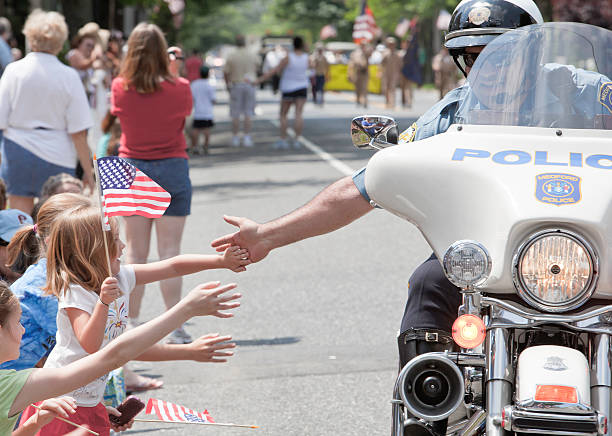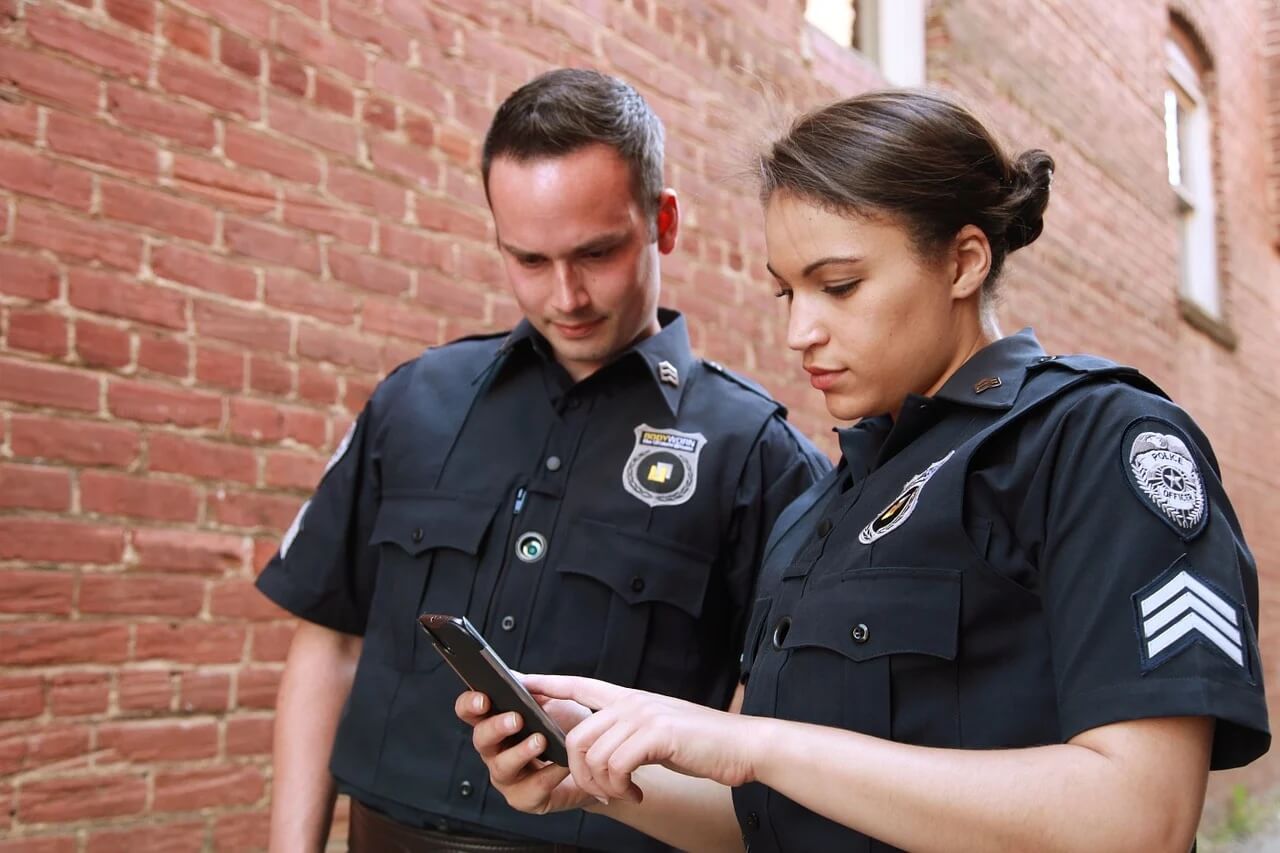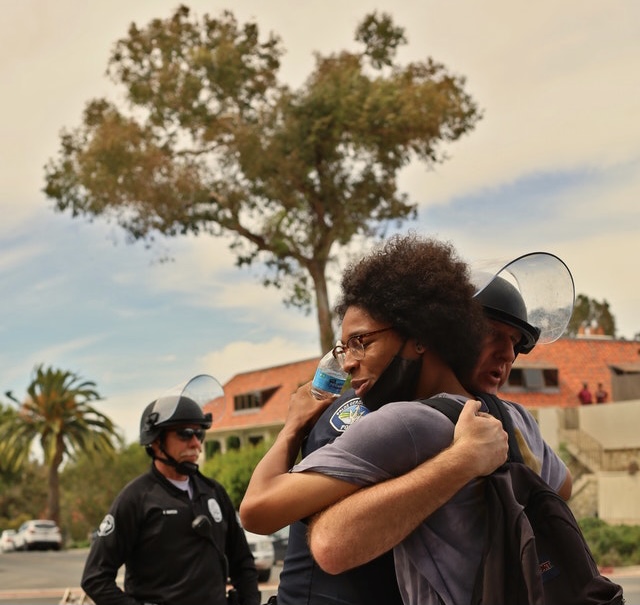Introduction:
In an era of strained relationships between law enforcement and the public, community engagement has become more vital than ever for modern policing. By dedicating themselves to building strong, positive relationships and trust with the communities they serve, police departments can become more effective at preventing crimes, solving cases, and keeping the public safe.
However, successful community engagement does not happen overnight. It requires significant, consistent effort and strategy on the part of law enforcement leadership and officers to make it work. Implementing minor changes or checking off boxes for community meetings will not cut it. Achieving real results requires transforming the culture and mindset of a police force to value civic partnerships and community voices.
What is Community Policing?
Community policing is a philosophy and strategy of policing that focuses on building ties and collaborating between police and the local community. Some key aspects of community policing include:
- Community Partnerships – Police work closely with community groups, leaders, residents, businesses, and other stakeholders to identify issues and solve problems. This collaboration allows the police to gain a better understanding of community needs and for the community to have input into policing strategies.
- Problem Solving – With community insight, police proactively identify patterns and root causes of issues. Then collaborative strategies are developed to address issues rather than just responding reactively.
- Organizational Transformation – Community policing requires a department-wide commitment to support officers’ community engagement efforts. Training, leadership buy-in, policies, evaluations and incentives are aligned to reflect community partnerships as a top priority.
- Decentralization – Decision making authority and accountability is delegated to lower levels so frontline officers are empowered to work creatively with their assigned communities.
- Resident Interaction – Officers are expected to get to know their communities through face-to-face interactions at public events, meetings, visiting schools and businesses, and daily casual contacts while on patrol. This leads to better understanding and trust.
The overarching focus of community policing is on promoting a shared responsibility between police and community for public safety based on mutual trust and cooperation. It aims to overcome distrust and work proactively to prevent crimes before they occur.
Here are 5 in-depth tips that law enforcement organizations can follow to help create substantial, successful community engagement:
Tip 1: Focus on Transparency and Open Communication
Transparency is the foundation on which all other community engagement efforts should be built. Being transparent means openly sharing policies, procedures, data, statistics, and information with the public on a regular basis. It demonstrates that the police department has nothing to hide from community oversight.
Several methods to increase transparency include:
- Publishing updated data and reports on a user-friendly online dashboard
- Posting department policies and procedures publicly on the website
- Releasing records and information as requested promptly
- Holding regular press conferences and briefings to communicate actions and strategies
- Using social media platforms frequently to provide info and updates
- Sending out newsletters, emails, texts, or mailed notices to update residents
- Providing easy contact options for community members to get questions answered.
By embracing transparency and keeping an open line of communication, police departments build crucial public trust and understanding.
Tip 2: Actively Listen to the Community
In addition to talking to the public, law enforcement must also listen. Seek out opportunities to hear directly from community members about their concerns, stories, and needs.
Ways to prioritize active listening include:
- Attending neighborhood association and community meetings to learn about issues
- Hosting open forums and listening sessions for residents to voice opinions
- Organizing focus groups of community leaders, activists, youth, minorities etc.
- Informally engaging with residents while on patrol by stopping to talk and answer questions
- Conducting surveys, interviews, and other research to gauge community sentiments
- Monitoring social media and online comments to understand complaints and feedback
- Appointing liaison officers specifically tasked with building relationships and listening to constituencies
- Creating civilian advisory councils to provide recommendations from the public’s perspective
Approaching communities with sincere interest and intention to listen demonstrates that their voices and experiences matter to the police department. This helps build trust and stronger partnerships.
Tip 3: Commit to Community-Oriented Policing
Community-oriented policing prioritizes positive community relationships and problem-solving over reactive responses to individual incidents.
Tactics include:
- Conducting foot patrols and bike patrols to allow more personal interactions with residents
- Assigning officers to consistent neighborhoods to build familiarity with residents
- Attending community events and meetings while on duty to build relationships
- Collaborating with communities to identify problems and implement solutions together
- Focusing efforts on quality-of-life issues important to residents like traffic, nuisance properties, etc.
- Partnering with local nonprofits, businesses, religious groups, residents, etc. on programs and initiatives
- Organizing community clean ups, park events, sports activities, and other service projects
- Creating citizen academies and youth programs to provide positive exposure to police
By embedding officers within neighborhoods and prioritizing problem-solving over arrests, community policing fosters greater trust and partnerships.
Tip 4: Reflect Diversity and Cultural Competence
To effectively engage diverse communities, police departments must reflect that diversity internally and demonstrate cultural competence. Strategies include:
- Making diversity and cultural awareness central pillars of recruitment, hiring, and training
- Setting goals to recruit and hire officers who represent the community’s demographics
- Eliminating biased recruiting and hiring practices that discourage diversity
- Providing regular bias, racism, de-escalation, and culture-related training
- Promoting underrepresented groups already within the department to leadership roles
- Collaborating with community groups to improve cultural awareness and competency
- Partnering with high schools and colleges to encourage youth of color to pursue law enforcement careers
- Creating employee resource groups internally for various affinities
- Accommodating religious, cultural, and linguistic needs of both officers and community members
By becoming more knowledgeable, sensitive, and representative of the communities served, police can significantly improve community relations and responsiveness.
Tip 5: Integrate Community Input into Policies and Actions
For engagement to be meaningful, community feedback must influence police priorities and reforms. Law enforcement leadership should:
- Structure civilian oversight councils and task forces with real authority to review policies and propose changes
- Debate and enact policy reforms with substantial community input and involvement
- Use community survey data to guide strategy and improve responsiveness
- Hire independent researchers to study department practices and make recommendations
- Meet routinely with diverse community groups to discuss issues and collaborate on solutions
- Have officers complete intensive community projects as part of promotions or specialized units
- Incorporate community engagement goals into officer performance metrics and evaluations
- Issue regular public reports detailing how community input has driven reforms and progress
Integrating community voices at all levels of policy making and actions transforms engagement programs into genuine partnerships for change.
Bonus Tip: Embrace Technological Innovations Responsibly:
In the ever-evolving landscape of law enforcement, technological innovations have emerged as powerful tools to enhance community engagement. Among these innovations, surveys have proven to be a valuable resource for law enforcement agencies striving to build trust and better understand their communities.
Utilizing Surveys to Strengthen Community Bonds:
Surveys offer a direct and systematic method to gather insights from community members about their perceptions, concerns, and expectations regarding law enforcement. These surveys can be administered through various platforms, including online forms, mobile apps, and community events. By carefully designing surveys that capture relevant data points, law enforcement agencies can gain a deep understanding of community sentiments, which in turn helps tailor their strategies for effective engagement.
Officer Survey: A Game-Changer in Community Engagement:
Officer survey is a particularly insightful tool that many police agencies across the country have successfully implemented. These surveys provide law enforcement personnel with the opportunity to gather feedback directly from the communities they serve. Through Officer Survey, agencies can:
- Enhance Accountability: Officer surveys enable agencies to monitor and assess interactions between officers and community members. By collecting feedback on officers’ conduct, agencies can take immediate action to address any concerns, reinforcing accountability.
- Fine-Tune Training: Gathering data on community perceptions of officer behavior helps agencies identify areas for improvement in training programs. This data-driven approach ensures that officers are equipped with the necessary skills to engage with the public effectively and respectfully.
- Bridge Communication Gaps: Officer surveys can uncover communication gaps or misunderstandings between law enforcement and the community. By addressing these issues, agencies can foster open dialogue and mutual understanding.
- Build Trust: When community members see that their input is valued and acted upon, it fosters a sense of trust in law enforcement agencies. Officer surveys demonstrate a commitment to continuous improvement and community collaboration.
To learn more about Officer Survey and how it can help your agency, schedule a free demo today!








